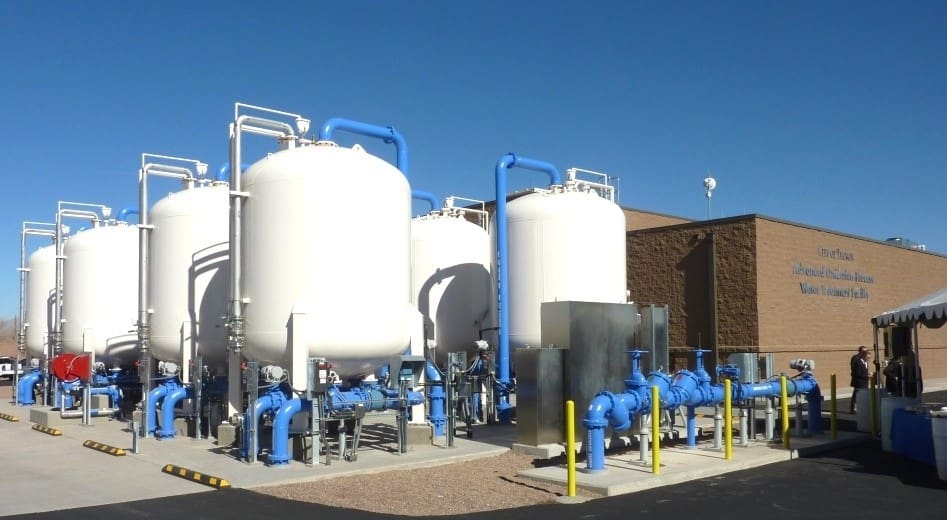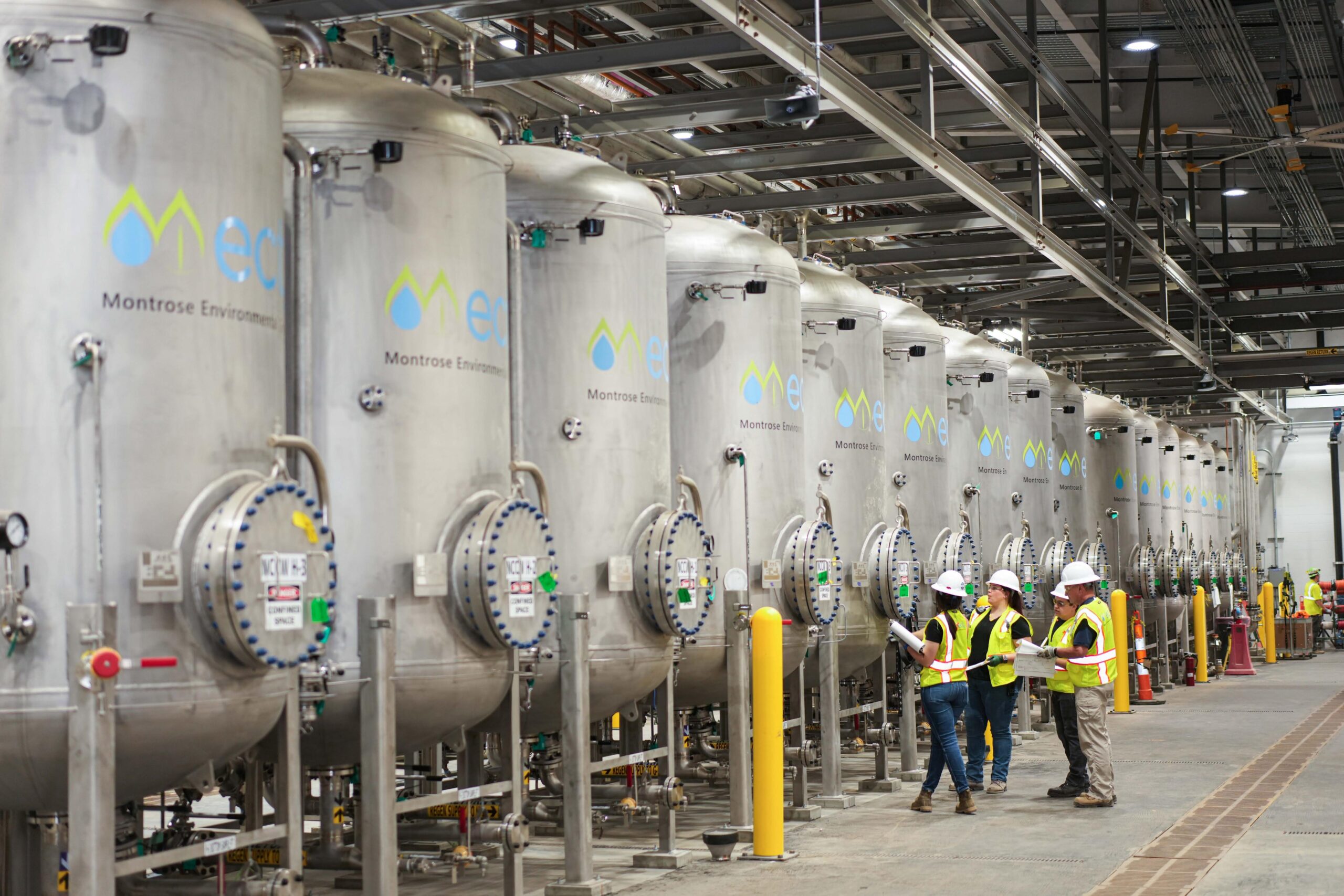Just How PFAS Therapy Guarantees Tidy and Lasting Water
The presence of PFAS, typically known as "forever chemicals," positions considerable obstacles to water high quality and public health. Advanced therapy innovations, consisting of turned on carbon adsorption and membrane filtering, have arised as efficient remedies to alleviate these pollutants. By using these approaches, communities can not just achieve cleaner water however also foster sustainable practices that secure ecological communities. The implications of these therapies expand beyond instant wellness benefits; they elevate critical concerns about long-lasting water monitoring strategies that need to be addressed to guarantee a resistant future. What does this mean for our strategy to water sustainability?

Recognizing PFAS Contamination
PFAS, or per- and polyfluoroalkyl substances, have become a substantial environmental issue because of their prevalent frequency and persistence in the atmosphere. These artificial chemicals have actually been made use of in various industrial applications and customer items, consisting of non-stick cooking equipment, waterproof clothes, and food product packaging, as a result of their one-of-a-kind homes such as water and oil resistance.
The contamination of dirt and water resources by PFAS takes place primarily with commercial discharges, firefighting foam use, and seeping from land fills. pfas management. As soon as launched, these materials are immune to degradation, leading to their accumulation in the environment. This persistence raises crucial problems, as PFAS can travel cross countries through groundwater and surface water systems, influencing drinking water materials and ecological communities

Health Risks of PFAS
The perseverance of PFAS in the atmosphere raises significant wellness worries for individuals exposed to these materials. Study has actually linked PFAS exposure to numerous negative health and wellness effects, consisting of immune system dysfunction, liver damage, and raised threat of specific cancers.
The universality of PFAS in consumer products, such as non-stick pots and pans, water-repellent fabrics, and food product packaging, further intensifies the threat of exposure. Consuming alcohol water polluted with PFAS is a substantial worry, as these chemicals can leach into groundwater resources. Susceptible populaces, including youngsters and those living near industrial websites, might face intense risks because of their developing systems and prospective for higher direct exposure levels.
As recognition of these health and wellness threats continues to expand, regulatory firms are beginning to develop guidelines for PFAS degrees in drinking water. Public wellness efforts are vital to mitigate direct exposure and protect areas from the long-lasting results of these harmful materials.

Innovative Therapy Technologies
How can we properly take on the challenges postured by PFAS contamination in water sources? Cutting-edge treatment modern technologies are becoming vital solutions in the pursuit for clean water. These techniques concentrate on the removal or devastation of per- and polyfluoroalkyl substances (PFAS), which are well-known for their perseverance in the atmosphere.
One encouraging method is adsorption making use of advanced products, such as activated carbon and ion exchange materials. These products have revealed efficiency in catching PFAS particles from water. Another notable technology is membrane purification, which uses nanofiltration and turn around osmosis to separate contaminants at the molecular degree, thus offering an obstacle against PFAS.
Furthermore, progressed oxidation processes (AOPs) utilize solid oxidants to break down PFAS substances into safe results. This method is specifically effective for treating highly polluted water resources. Bioremediation techniques, using specific microbes, are likewise being explored to break down PFAS.
As research study continues, crossbreed systems that integrate numerous innovations might offer boosted performance, resolving the complexities of PFAS contamination. The growth and application of these cutting-edge treatment technologies are necessary actions towards ensuring the safety and sustainability of our water resources.
Benefits of Reliable PFAS Therapy
Successfully dealing with PFAS contamination in water resources dramatically enhances public health and wellness and ecological safety. PFAS, typically described as "forever chemicals," are resistant to degradation and can collect in find more information the human body, leading to significant health threats such as cancer, liver damages, and immune system dysfunction. By carrying out effective therapy methods, areas can decrease direct exposure to these dangerous substances, inevitably improving the wellness outcomes of their populaces.
Moreover, effective PFAS treatment adds to the preservation of regional communities. Infected water can adversely influence aquatic life and interfere with the delicate equilibrium of neighborhood habitats. By making certain tidy water, treatment procedures safeguard biodiversity and keep environmental honesty.
Furthermore, effective PFAS remediation can promote public self-confidence in water quality. When areas are assured that their drinking water is totally free from harmful pollutants, it advertises a sense of security and wellness. This trust is crucial for neighborhood involvement and support for recurring water management efforts.
Future of Water Sustainability
In the middle of growing worries about water high quality and deficiency, the future of water sustainability depends upon innovative strategies and collaborative efforts. As areas encounter the impending threats of contaminants like PFAS, the advancement of sophisticated treatment technologies is vital. These modern technologies not only concentrate on the elimination of unsafe substances however additionally advertise the reuse and recycling of water, thereby decreasing total demand.
Additionally, reliable water governance plays a vital duty in ensuring sustainable methods. Policymakers need to incorporate clinical research study with regulative frameworks to establish clear guidelines for water usage and therapy. Stakeholder involvement, consisting of neighborhood neighborhoods and markets, promotes a sense of shared responsibility and urges lasting techniques throughout different industries.
Investment in infrastructure is additionally important; upgrading aging systems to incorporate modern purification and filtration methods can considerably enhance water quality. Embracing environment-friendly modern technologies, such as all-natural filtration systems, can provide green remedies.
Ultimately, the future of water sustainability exists in an alternative approach that integrates technology, policy, and area involvement. By focusing on these aspects, we can guard our water resources for generations to find, ensuring clean and lasting water for all.
Conclusion
To conclude, the reliable treatment of PFAS is necessary for ensuring clean and lasting water. By employing sophisticated modern technologies next page such as activated carbon adsorption, membrane purification, and advanced oxidation processes, areas can significantly decrease the wellness reference risks related to these impurities. Furthermore, the combination of these therapy approaches sustains community security and boosts biodiversity. Eventually, durable PFAS therapy strategies add to long-lasting strength in water management, fostering public count on water top quality and advertising lasting practices.